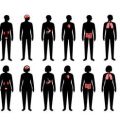Understanding Anxiety in the Context of Mental Health Rehabilitation
What Is Anxiety?
Anxiety is a common emotional experience that everyone feels from time to time. However, for many people in mental health rehabilitation programs in the United States, anxiety can become overwhelming and interfere with daily life. In these cases, it may be considered an anxiety disorder, which often requires special attention and management.
How Common Is Anxiety Among People in Rehabilitation?
Anxiety disorders are among the most frequent mental health challenges faced by individuals seeking rehabilitation support. According to the National Institute of Mental Health (NIMH), about 19% of adults in the U.S. experience an anxiety disorder each year. The prevalence tends to be higher among those already dealing with other mental health issues or substance use disorders, which are often addressed in rehab settings.
Prevalence of Anxiety Disorders
| Group | Estimated Prevalence (%) |
|---|---|
| General Adult Population | 19% |
| Mental Health Rehab Participants | Up to 40% |
| Individuals with Substance Use Disorders | 20-30% |
Symptoms of Anxiety Disorders
Anxiety can show up in different ways for different people, especially during rehabilitation. Here are some common symptoms:
- Persistent worry or fear that is hard to control
- Irritability or feeling “on edge”
- Trouble concentrating or finding your mind going blank
- Restlessness or feeling keyed up
- Physical symptoms like racing heart, sweating, headaches, or stomachaches
- Trouble sleeping or staying asleep due to worries
Common Symptoms Table
| Mental Symptoms | Physical Symptoms |
|---|---|
| Persistent worry Irritability Trouble focusing Feeling overwhelmed |
Racing heart Sweating Trembling Nausea Headaches Trouble sleeping |
The Impact of Anxiety on Rehabilitation Progress
Anxiety can make it harder for people to participate fully in mental health rehab programs. It might keep them from attending group therapy sessions, engaging in activities, or following through on treatment plans. High levels of anxiety can also increase the risk of setbacks, such as relapse for those recovering from substance use disorders. Understanding and managing anxiety is crucial for making steady progress during rehabilitation and improving overall well-being.
2. Evidence-Based Therapeutic Approaches
Understanding Proven Strategies for Anxiety Management
When it comes to managing anxiety in mental health rehabilitation, American clinicians often rely on several well-researched and effective therapeutic approaches. These methods are designed to help individuals understand their anxiety, develop coping skills, and improve their overall quality of life. Below, we’ll explore some of the most widely used strategies, including Cognitive Behavioral Therapy (CBT), Acceptance and Commitment Therapy (ACT), and other accepted interventions.
Cognitive Behavioral Therapy (CBT)
CBT is one of the most popular forms of therapy for anxiety in the United States. This approach helps people recognize unhelpful thought patterns and behaviors that contribute to their anxiety. Through CBT, individuals learn practical skills to challenge negative thinking, face fears gradually, and develop healthier ways of coping.
Key Components of CBT for Anxiety:
| Component | Description |
|---|---|
| Cognitive Restructuring | Identifying and challenging negative thoughts about situations or oneself |
| Exposure Techniques | Gradually facing feared situations in a safe way to reduce avoidance behaviors |
| Skills Training | Learning relaxation techniques, problem-solving, and stress management skills |
Acceptance and Commitment Therapy (ACT)
ACT is another evidence-based therapy commonly practiced by American therapists. Instead of fighting anxious feelings, ACT teaches people to accept their emotions as a normal part of life. The focus is on living according to personal values while still making space for uncomfortable feelings when they arise.
Main Principles of ACT:
- Acceptance: Allowing thoughts and feelings to come and go without struggling with them
- Cognitive Defusion: Learning to see thoughts as just thoughts, not facts that control behavior
- Values Clarification: Identifying what matters most in life and setting goals based on those values
- Committed Action: Taking steps toward meaningful activities despite anxiety or discomfort
Other Widely Accepted Interventions
Apart from CBT and ACT, American clinicians often use additional strategies to help manage anxiety:
- Mindfulness-Based Stress Reduction (MBSR): Uses meditation and mindfulness practices to reduce stress and anxiety symptoms.
- Psychoeducation: Providing information about anxiety helps individuals understand their condition better and reduces fear or stigma.
- Medication Management: In some cases, medications prescribed by psychiatrists can be an important part of a comprehensive treatment plan.
- Group Therapy: Offers support from peers who share similar experiences with anxiety, promoting connection and reducing isolation.
The Importance of Personalized Care
No single approach works for everyone. In the U.S., therapists typically collaborate with clients to create a personalized treatment plan that fits each individual’s unique needs, preferences, and cultural background. By combining these evidence-based therapies with ongoing support, many people find significant relief from anxiety symptoms during their rehabilitation journey.
![]()
3. Pharmacological Management and Integrative Treatments
The Role of Medications in Anxiety Management
Medications play an important part in managing anxiety, especially for individuals who experience moderate to severe symptoms that interfere with daily life. In the United States, doctors and psychiatrists often prescribe medications as part of a comprehensive mental health rehabilitation plan. Some common types of medications include:
| Medication Type | Common Examples | Main Use |
|---|---|---|
| Selective Serotonin Reuptake Inhibitors (SSRIs) | Sertraline, Fluoxetine, Escitalopram | Long-term management of anxiety and depression |
| Benzodiazepines | Alprazolam, Lorazepam, Diazepam | Short-term relief of acute anxiety symptoms |
| Buspirone | Buspar | Treats generalized anxiety disorder without sedation |
| Beta Blockers | Propranolol, Atenolol | Helps manage physical symptoms like rapid heartbeat |
It is important to note that medication choices are made based on individual needs and possible side effects. American healthcare providers typically monitor patients closely when starting or changing medications.
Complementary Treatments for Anxiety
Many Americans use complementary or alternative treatments alongside medication and therapy to help reduce anxiety. These options focus on the mind-body connection and can be tailored to personal preferences. Popular complementary treatments include:
- Mindfulness Meditation: Practicing mindfulness helps people stay grounded and reduce anxious thoughts.
- Yoga: Combines movement, breathing, and relaxation techniques for stress reduction.
- Aromatherapy: Essential oils like lavender may help promote calmness.
- Nutritional Support: Eating a balanced diet and taking certain supplements can support mental wellness.
- Acupuncture: Some find this traditional Chinese medicine technique helpful for anxiety relief.
The Importance of Integrated Care in the American Healthcare System
An integrated care approach brings together different providers—such as primary care physicians, mental health professionals, pharmacists, and social workers—to create a coordinated plan for each person. In the U.S., this team-based model is growing more popular because it addresses both medical and emotional needs for better overall outcomes.
| Provider Type | Role in Anxiety Management | How They Work Together |
|---|---|---|
| Mental Health Professionals (Therapists, Psychiatrists) | Counseling, therapy, prescribing psychiatric medications | Create treatment plans; adjust therapies or medications as needed |
| Primary Care Physicians (PCPs) | General health check-ups; initial screening for anxiety symptoms; medication management support | Refer patients to specialists; monitor for side effects or other health issues related to anxiety or treatment |
| Pharmacists | Counsel on medication use and potential interactions | Provide education; answer questions about prescriptions |
| Social Workers | Assist with access to resources; offer counseling | Coordinate community support services |
The Value of a Personalized Approach
No two people experience anxiety in exactly the same way. A combination of medication, complementary treatments, and integrated care helps ensure that every individual receives the support best suited to their lifestyle, culture, and health goals within the American healthcare system.
4. Coping Strategies and Lifestyle Modifications
Practical Skills for Managing Anxiety
Managing anxiety in daily life is possible with simple skills and lifestyle changes. Many of these methods are widely used and accepted in the United States, making them easy to practice and fit into your routine. Here are some practical coping strategies:
| Technique | Description | American Examples |
|---|---|---|
| Mindfulness | Staying present in the moment and observing thoughts without judgment. | Apps like Headspace or Calm; guided meditations from YouTube or local meditation groups. |
| Exercise Routines | Physical activity helps reduce anxiety by releasing endorphins. | Walking in local parks, joining a YMCA fitness class, participating in community sports leagues. |
| Deep Breathing | Slowing down your breath to calm your mind and body. | Practicing “4-7-8” breathing or box breathing techniques commonly taught in U.S. wellness programs. |
| Journaling | Writing down thoughts and feelings to process emotions. | Using gratitude journals, mood trackers, or popular planners like The Five Minute Journal. |
| Social Support | Reaching out to friends, family, or support groups for connection. | Joining local meetups, faith-based groups, or talking with a trusted friend over coffee. |
Lifestyle Modifications That Make a Difference
Certain lifestyle habits can make anxiety easier to handle. Simple changes in everyday routines often have a big impact on mental health:
- Regular Sleep Schedule: Go to bed and wake up at the same time every day. Good sleep is essential for managing stress.
- Nutrient-Rich Diet: Eat balanced meals with fruits, veggies, whole grains, and lean proteins. Avoid too much caffeine or sugar, as these can increase anxiety.
- Lessen Screen Time: Take breaks from phones and computers—especially social media—when feeling overwhelmed.
- Create a Relaxation Space: Set aside a quiet corner at home for reading, listening to music, or practicing relaxation techniques.
Culturally Relevant Community Resources
The United States offers many community-based resources that provide support for anxiety management. Americans often find help through the following options:
- Mental Health Hotlines: Calling the 988 Suicide & Crisis Lifeline provides immediate support during tough times.
- Community Centers: Local centers frequently offer free or low-cost yoga, meditation classes, or group therapy sessions.
- Parks & Recreation Programs: City parks host walking clubs, outdoor fitness classes, and group activities that encourage exercise and socialization.
- Libraries: Many public libraries host mindfulness workshops, book clubs focused on wellness topics, and free educational events.
- Cultural and Faith-Based Organizations: Churches, mosques, synagogues, and cultural centers often provide counseling services or peer support groups familiar with American values and traditions.
Quick Reference Table: Community Resources in the U.S.
| Resource Type | Description/How to Access |
|---|---|
| Mental Health Hotline (988) | A 24/7 phone line for crisis support; just dial 988 from any phone. |
| Parks & Recreation Centers | Find classes and clubs through your city’s official website or recreation department. |
| Libraries | Visit your local library’s website for event calendars and sign-up information. |
| Cultural/Faith-Based Groups | Check bulletin boards or websites of nearby organizations for upcoming support events. |
| Mental Health America (MHA) | This national nonprofit offers online screenings and resource directories at mhanational.org. |
A Friendly Reminder
You are not alone on your journey to manage anxiety. By practicing these strategies and reaching out to trusted community resources that reflect American culture and values, you can build resilience and improve your overall well-being every day.
5. Family, Peer, and Community Support Systems
Support networks play a crucial role in managing anxiety during mental health rehabilitation. In the United States, these networks often include family members, peer support groups, and community organizations. Each of these groups offers unique benefits that can help individuals cope with anxiety more effectively.
Family Support
Families often serve as the first line of support. American families can help by providing encouragement, understanding, and a sense of safety for those dealing with anxiety. Open communication within the family helps reduce stigma and makes it easier for individuals to seek help. Family members can also learn about anxiety management techniques together, so everyone is better prepared to handle challenging moments.
Ways Families Can Help
| Family Action | How It Helps with Anxiety Management |
|---|---|
| Listening without judgment | Makes the person feel heard and supported |
| Participating in therapy sessions if invited | Shows solidarity and improves understanding of anxiety |
| Encouraging healthy routines | Supports stability and reduces stress triggers at home |
| Learning about anxiety disorders | Reduces stigma and promotes empathy within the family |
Peer Support Groups
Peer support groups are common across the U.S., including both in-person meetings and online communities. These groups connect people experiencing similar challenges, which helps reduce feelings of isolation. Sharing stories and strategies among peers can be empowering, allowing individuals to learn new coping skills from others who truly understand their struggles.
Popular Peer Support Options in the U.S.
- NAMI (National Alliance on Mental Illness) Support Groups: Free local groups that focus on mental health education and support.
- Anxiety and Depression Association of America (ADAA): Offers online forums where people can share advice and encouragement.
- Mental Health America (MHA): Provides peer-led recovery programs for various age groups.
Community Organizations and Resources
Community organizations play an important role in supporting anxiety management through accessible resources such as workshops, counseling services, and public awareness events. Many American cities have local mental health centers or nonprofit organizations dedicated to mental wellness. These organizations can help individuals find professional care, connect with social services, or attend group activities that foster a sense of belonging.
Examples of Community-Based Support Services
| Organization Type | Main Services Offered | Cultural Relevance in the U.S. |
|---|---|---|
| Local Mental Health Centers | Counseling, therapy groups, crisis intervention | Easily accessible in most communities; often accept insurance or offer sliding scale fees |
| LGBTQ+ Resource Centers | Mental health workshops, safe spaces, advocacy programs | Cater to specific community needs and foster inclusivity |
| Faith-Based Organizations | Spiritual counseling, support meetings, referral services | Provide culturally sensitive support for faith communities |
| Youth Clubs & After-School Programs | Mental wellness education, group activities | Create supportive environments for younger individuals |
The Importance of Collaboration Among Networks
A strong support system often involves collaboration between families, peers, and community resources. When these networks work together—sharing information, encouraging participation in group activities, or helping someone access professional care—they create a safety net that makes it easier for individuals to manage their anxiety successfully within everyday American life.


